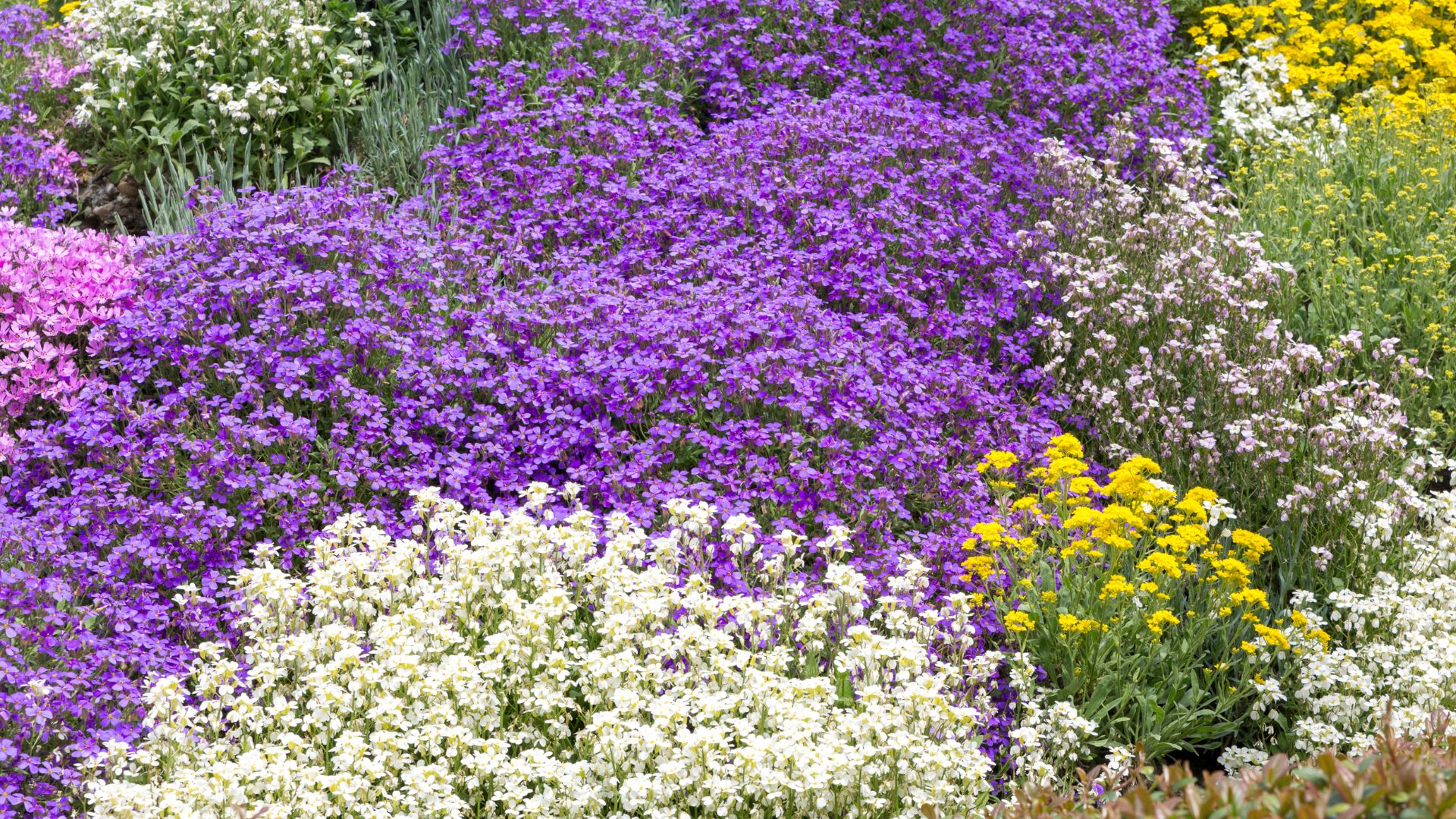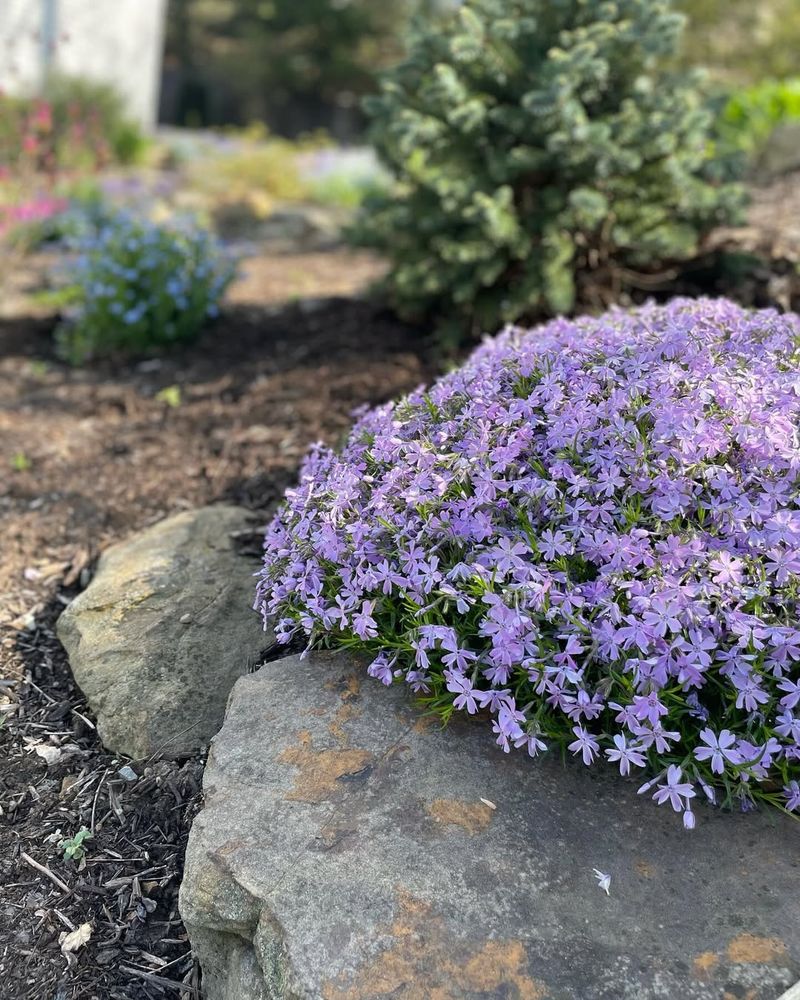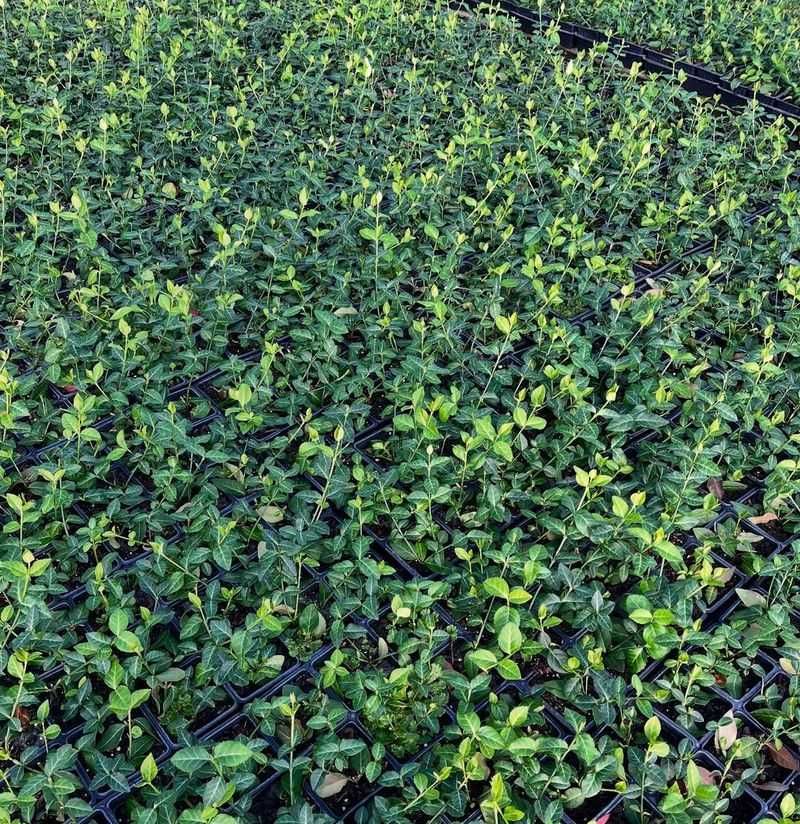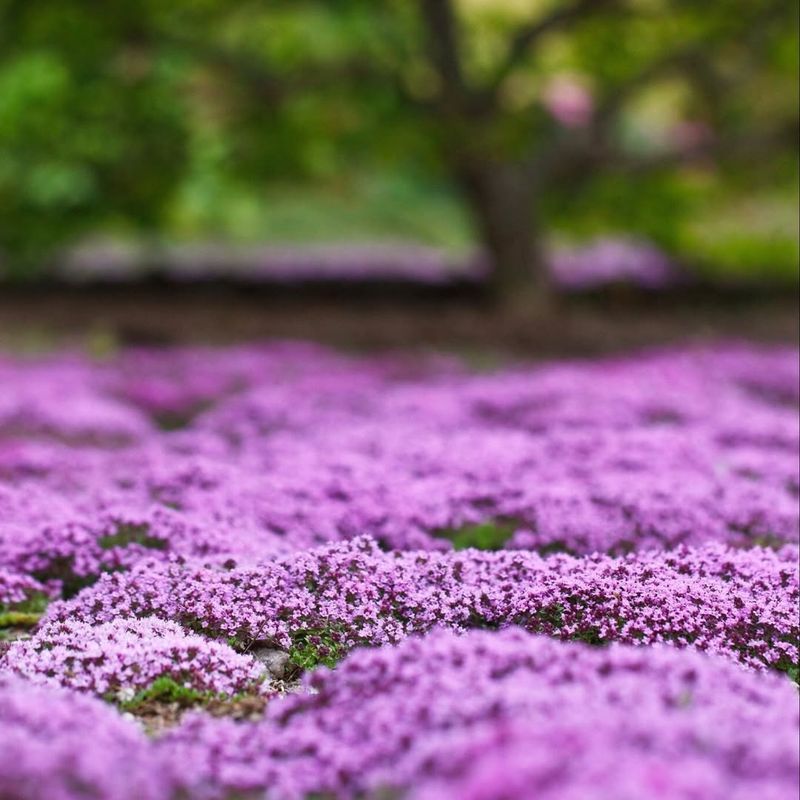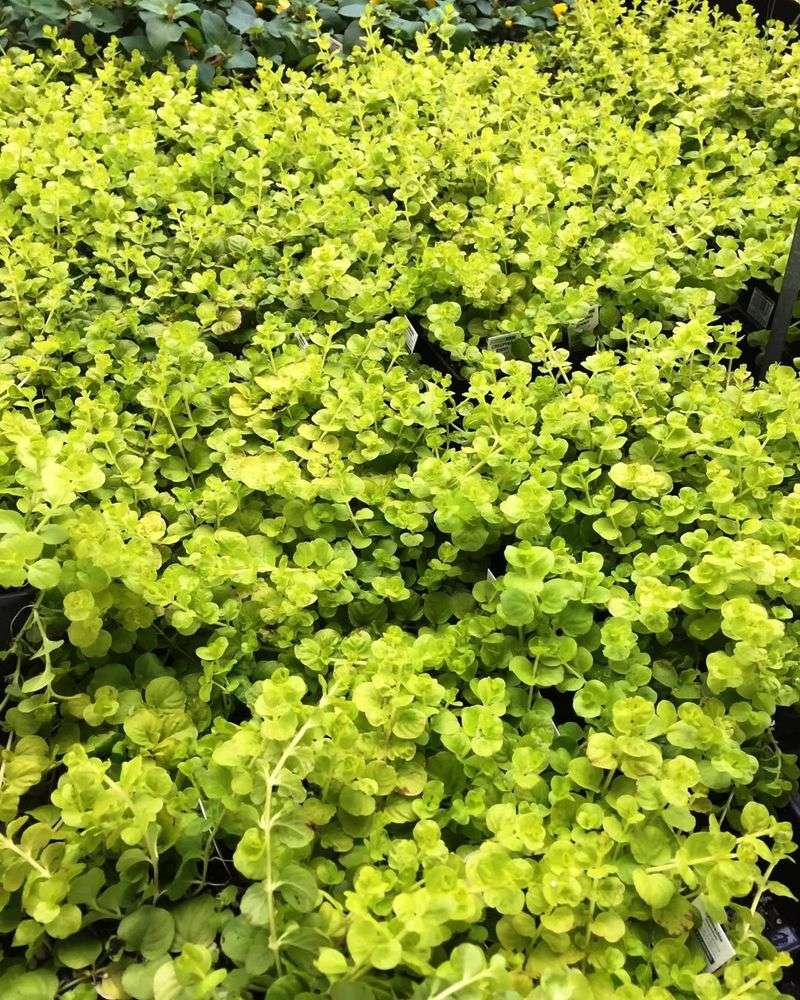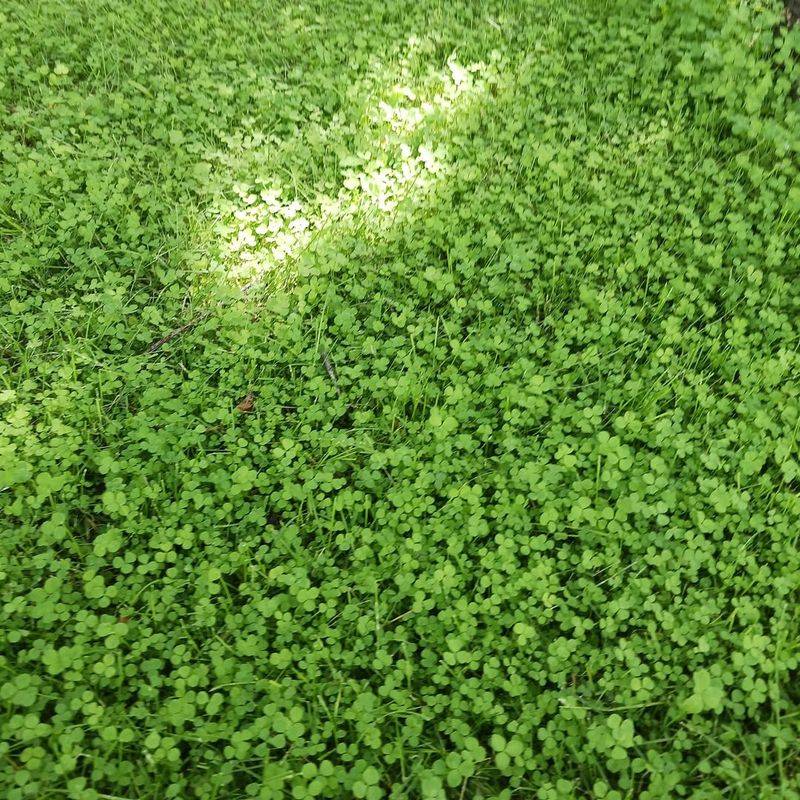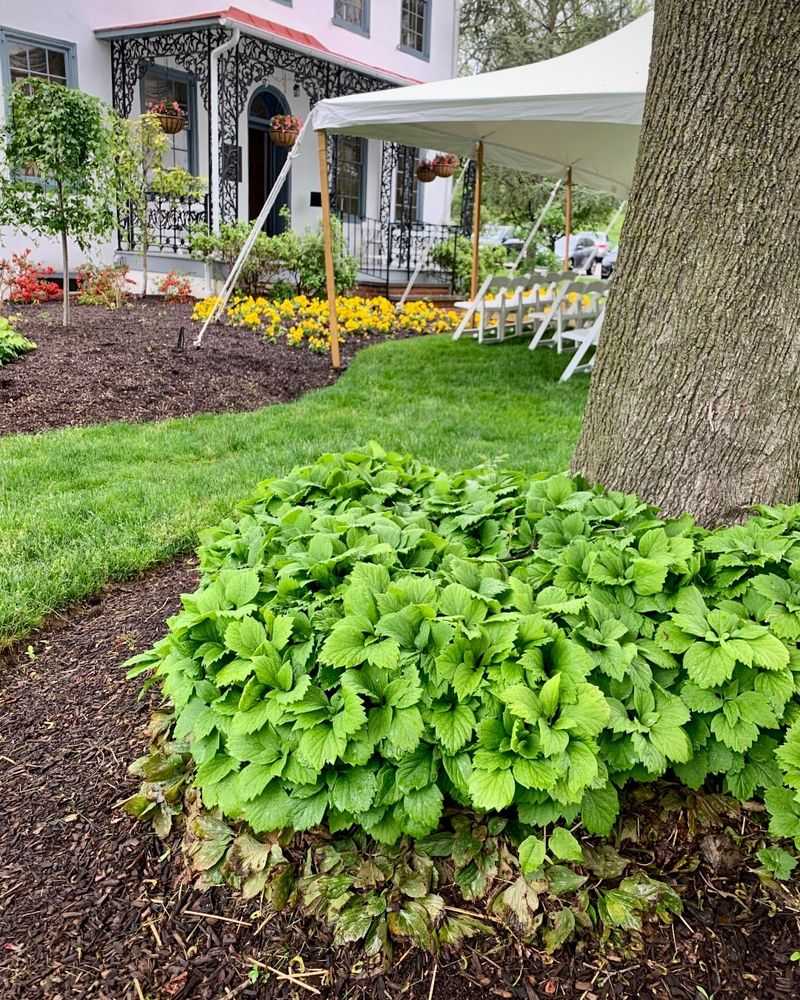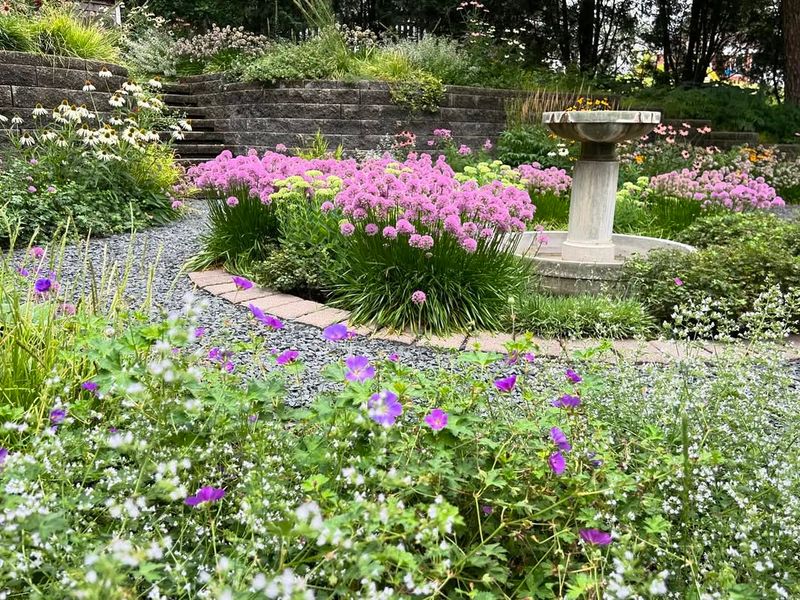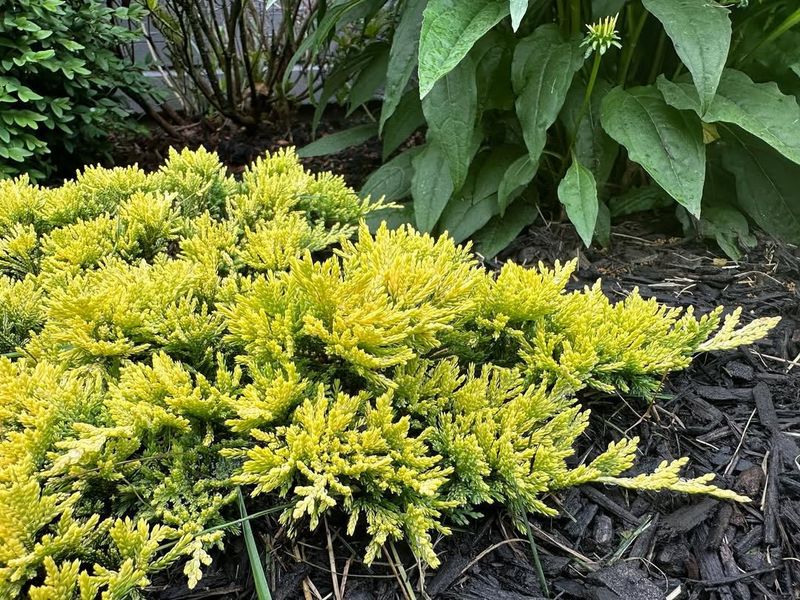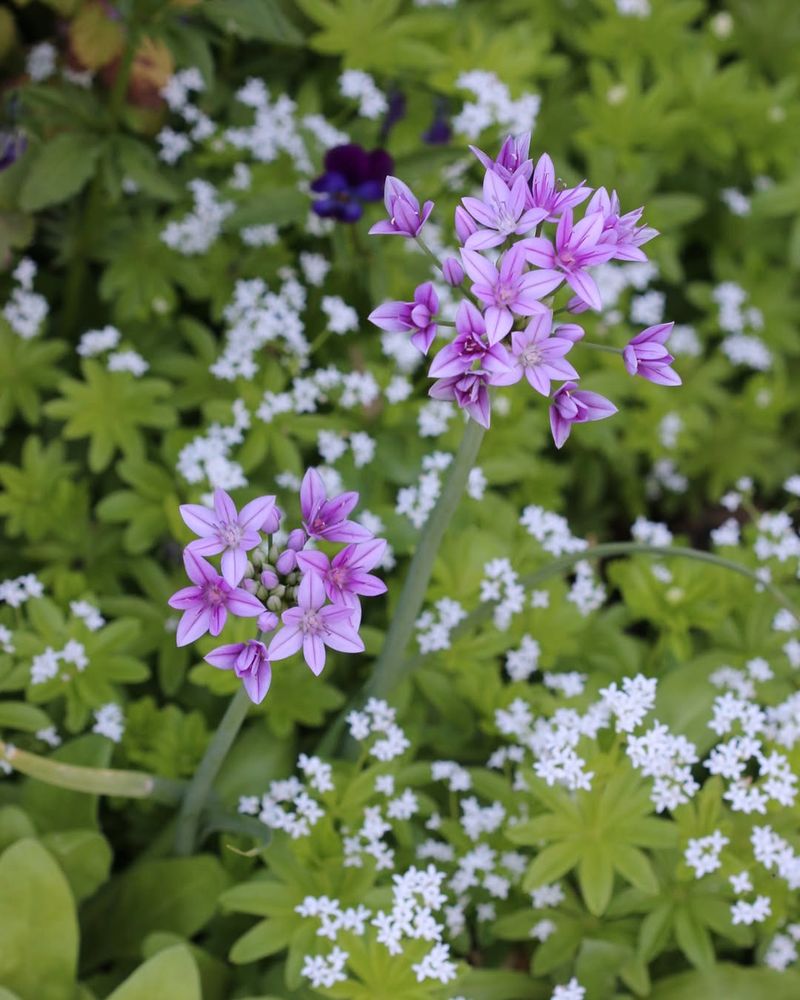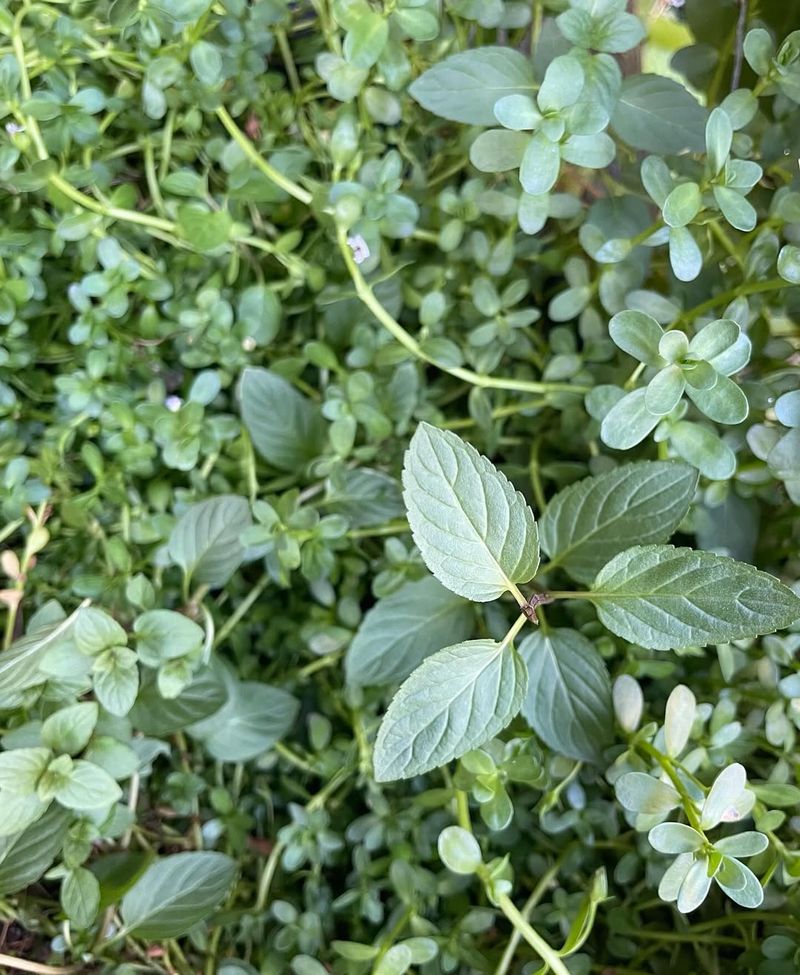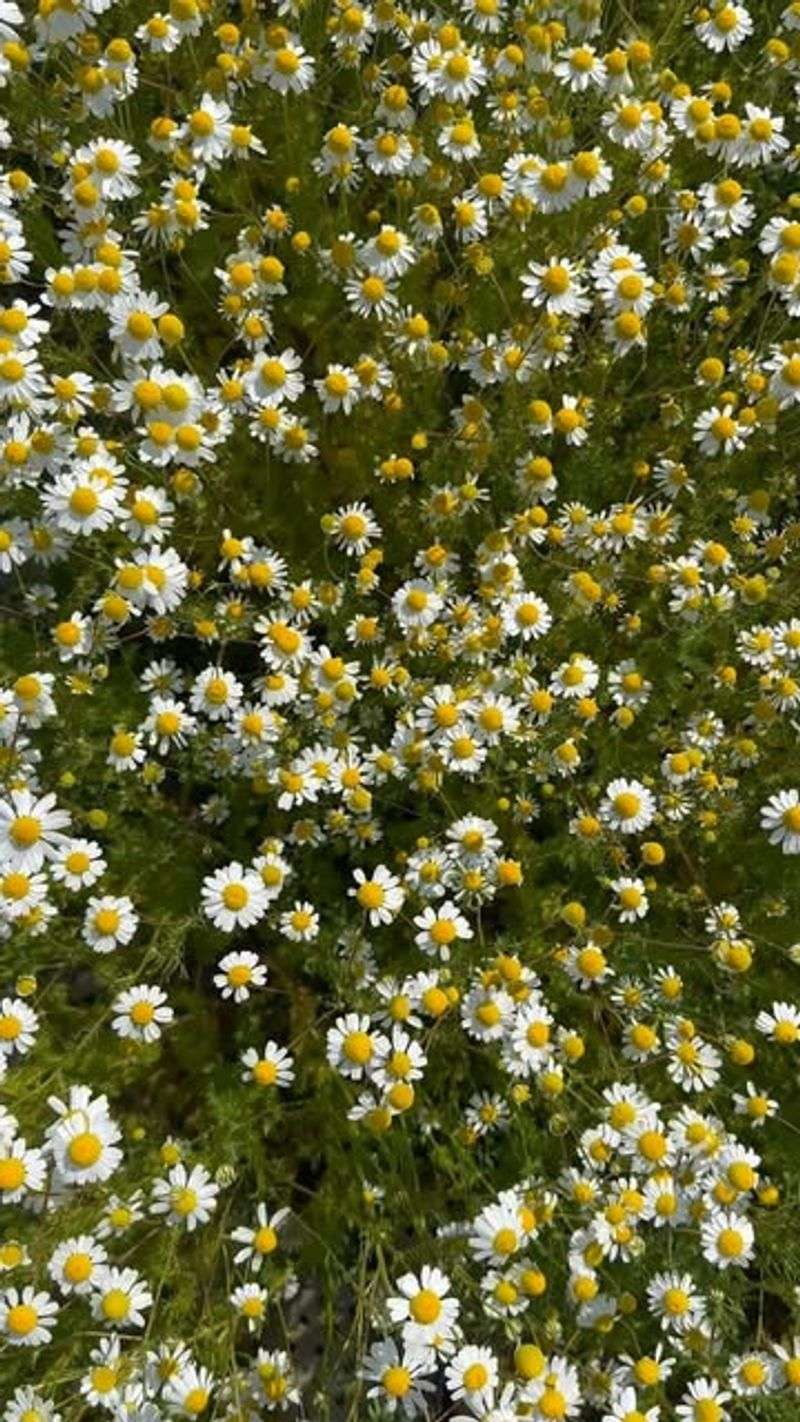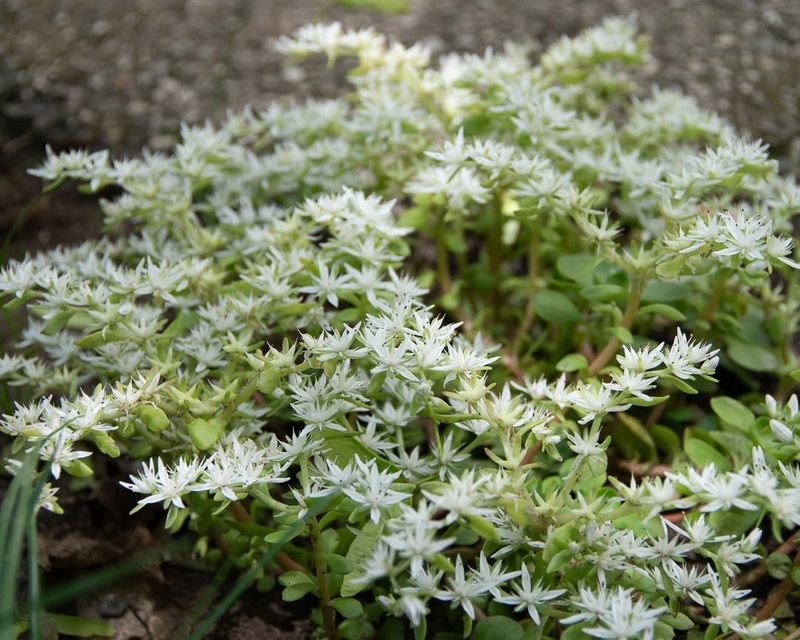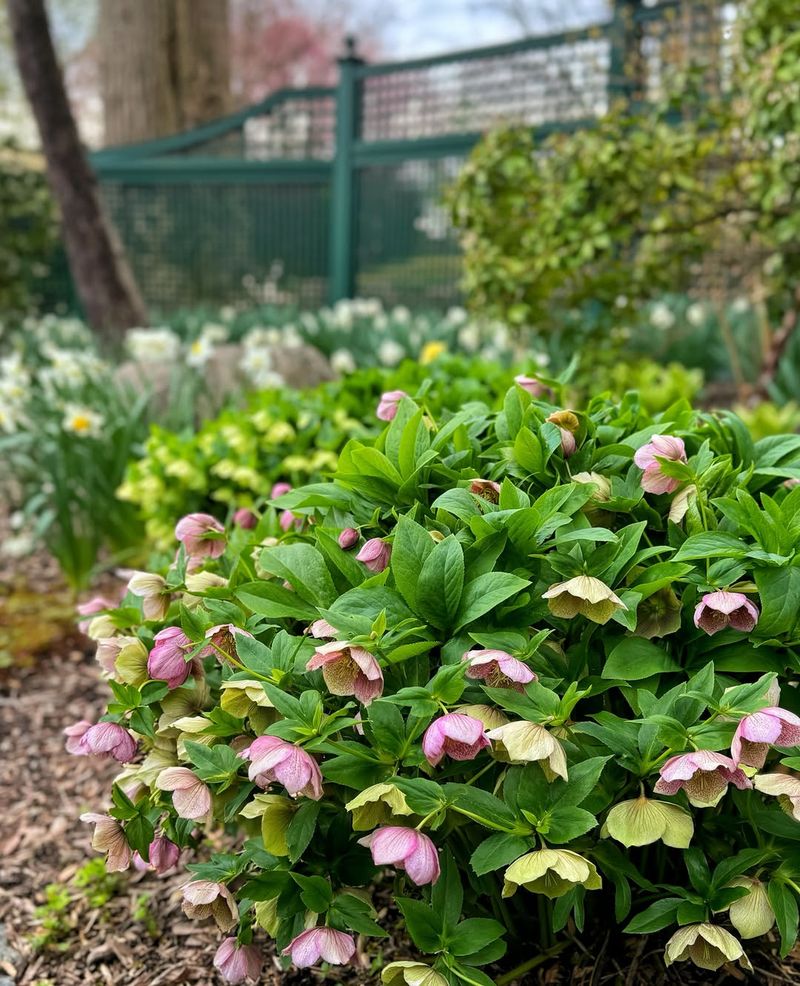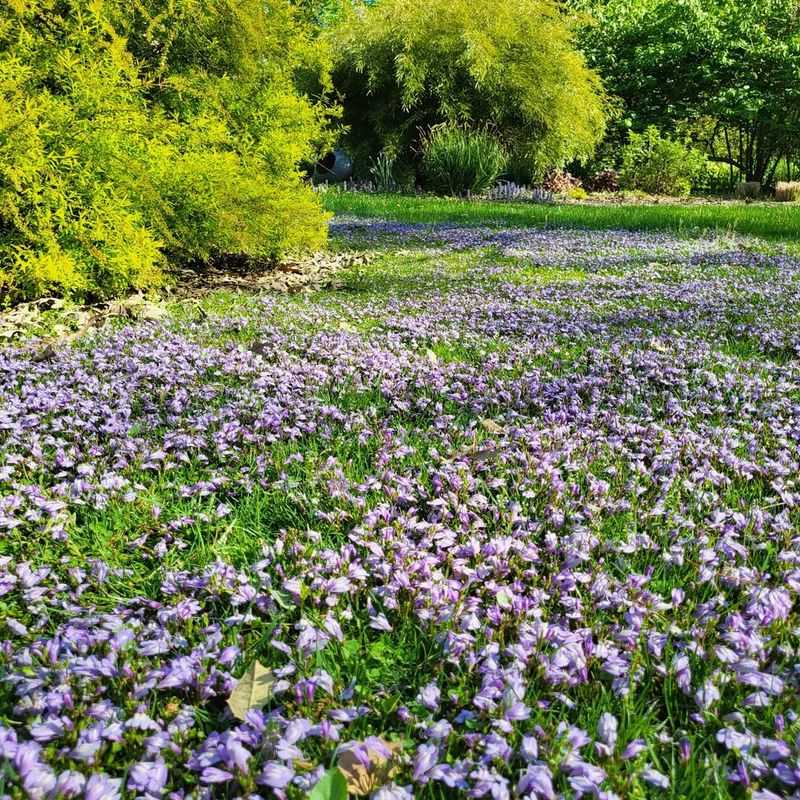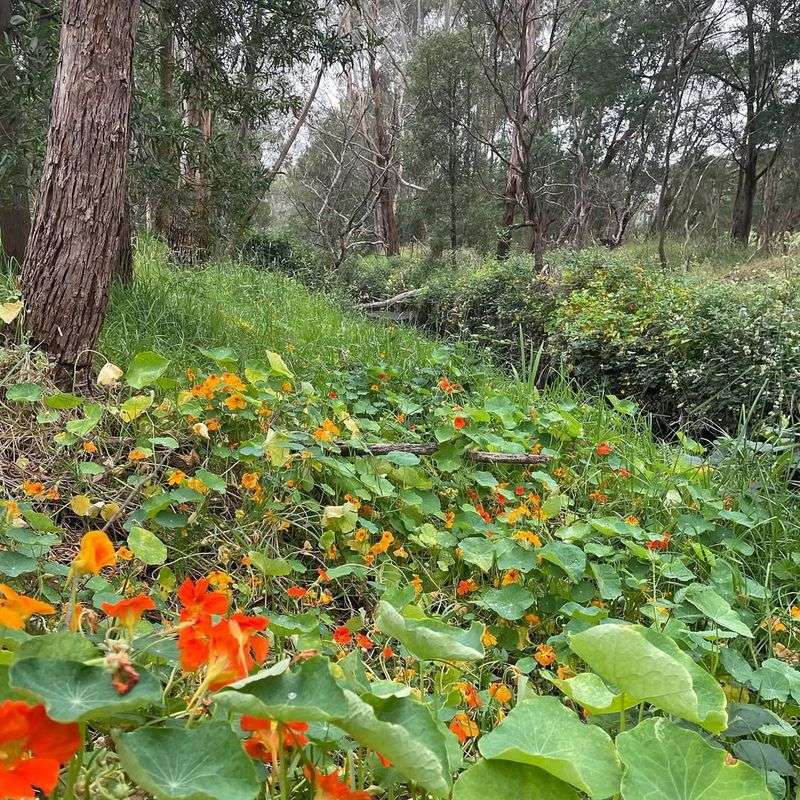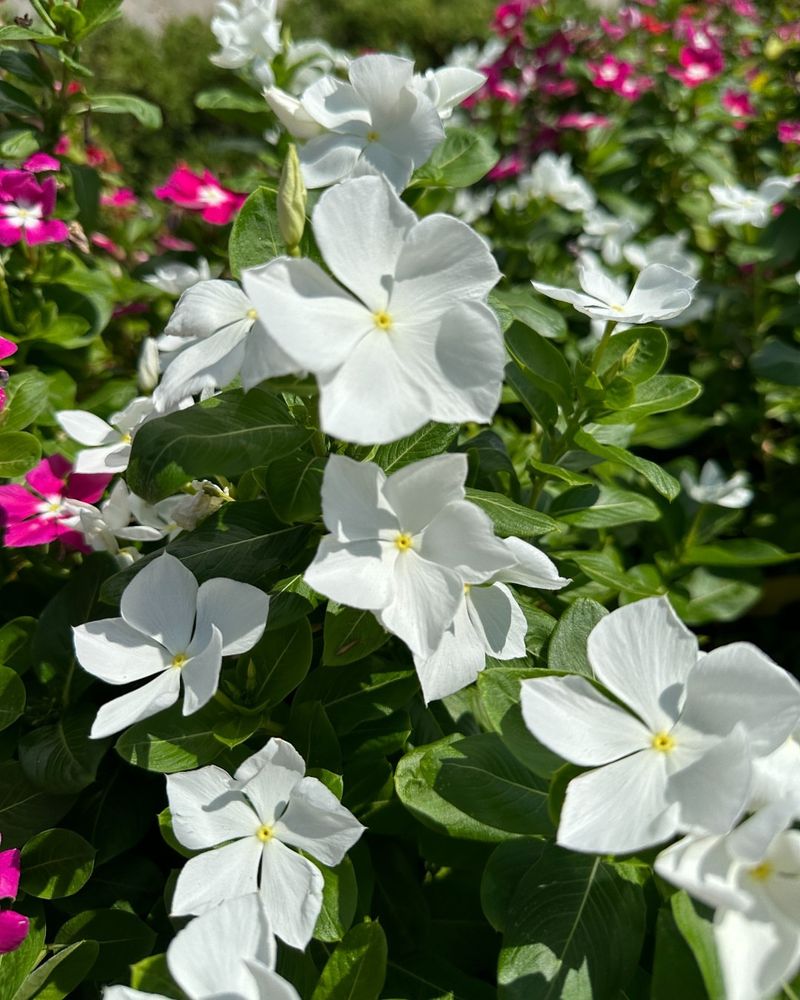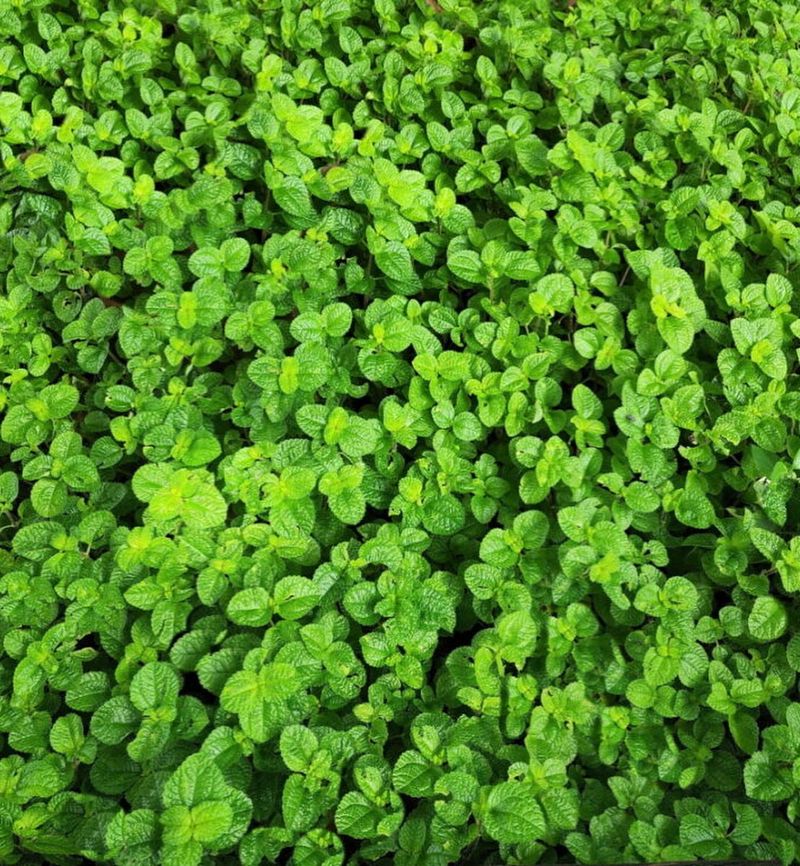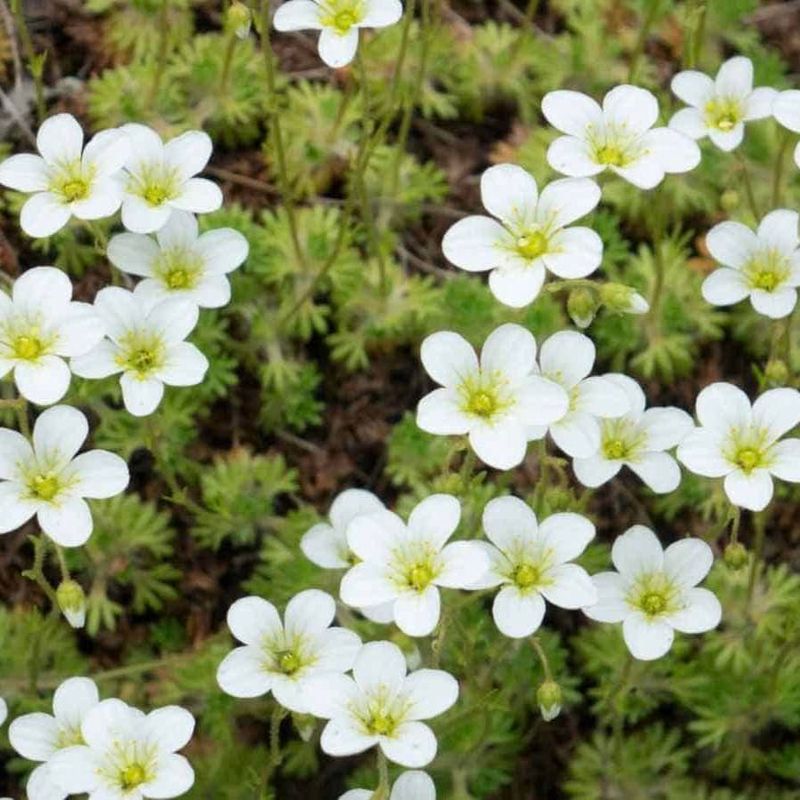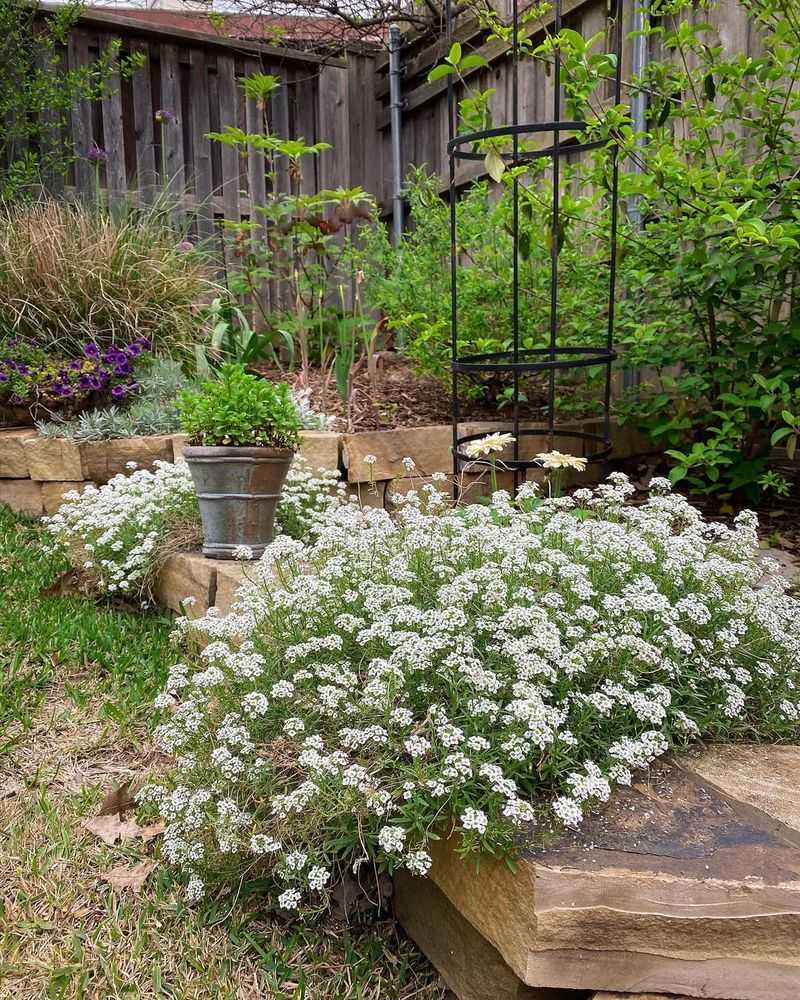Ground cover plants offer a lush, living alternative to traditional mulch, bringing both beauty and practicality to your garden. These low-growing wonders don’t just fill empty spaces—they suppress weeds, retain moisture, and add year-round interest with their vibrant foliage and blooms.
Whether you want to soften garden edges, create a pollinator-friendly space, or reduce maintenance, ground covers offer a versatile and eco-friendly solution. Say goodbye to dull, fading mulch and embrace a dynamic, thriving landscape with these hardworking, soil-loving companions!
1. Provides Year-Round Beauty
Imagine a garden that transforms with every season, offering a burst of colors and textures. Spreading plants can enhance garden aesthetics year-round, offering seasonal interest, varying textures, and colorful blooms.
They provide an ever-changing canvas that keeps your garden lively and inviting. Ground covers like sedum and creeping phlox maintain visual appeal even in winter, ensuring your flower beds never lose their charm and always delight the senses.
2. Natural Weed Suppression
Picture a garden immune to the invasion of pesky weeds. Dense ground cover plants act as a living mulch, preventing weed growth by blocking sunlight and competing for nutrients. Their thick foliage creates a barrier that leaves no room for unwanted guests.
With plants like vinca minor or ajuga, you can say goodbye to back-breaking weeding and hello to effortless garden upkeep. Enjoy the serenity of a weed-free landscape that ground covers naturally offer, making your gardening experience more enjoyable.
3. Helps Retain Soil Moisture
Visualize a garden that rarely thirsts. These plants reduce water evaporation, keeping soil moist for longer periods and reducing the need for frequent watering. Their leafy canopy shields the ground from the sun’s scorching rays, allowing moisture to linger in the soil.
In times of drought, these plants are your garden’s best allies, conserving water and sustaining plant health. By choosing ground covers like creeping thyme or Irish moss, you foster a sustainable garden that thrives with less water.
4. Prevents Soil Erosion
Envision a garden bed that stands strong against nature’s elements. Living mulch with strong root systems stabilize soil, preventing erosion from wind, rain, and runoff in flower beds and slopes. Their roots intertwine with the soil, creating a natural mesh that holds everything in place.
This makes them perfect allies for sloped areas prone to erosion. With varieties like juniper or creeping jenny, you can protect your garden from being washed away, ensuring its longevity.
5. Enriches The Soil Naturally
Think of a garden rooted in vitality. Ground cover plants improve soil health by adding organic matter, fixing nitrogen, and supporting beneficial microbes. As they grow, they contribute to the soil’s richness, making it more fertile.
Clover or alyssum work symbiotically with soil bacteria, enhancing its nutrient content. This natural enrichment leads to healthier plants and more bountiful blooms. By choosing these plants, you foster a self-sustaining garden that flourishes with minimal intervention, promoting long-term ecological balance.
6. Provides Habitat For Pollinators & Beneficial Insects
Consider a garden buzzing with life. Flowering carpet plants attract bees, butterflies, and insects that support a thriving garden ecosystem. These plants serve as both nectar and habitat sources, transforming your garden bed into a wildlife haven.
With varieties like creeping phlox or lavender, you invite these beneficial creatures to pollinate and add biodiversity. This not only enhances your garden’s beauty but also boosts plant health and productivity.
7. Requires Less Maintenance Over Time
Imagine a garden that almost takes care of itself. This type of plants reduces the need for mulching, weeding, and watering, making them a low-maintenance alternative to traditional mulch. As they establish, these plants form a dense mat that naturally suppresses weeds and conserves moisture.
With carpet plants like sedum or pachysandra, you can spend less time on garden chores and more time enjoying the beauty. They offer long-term ease, allowing you to relax and let nature do the work.
8. Regulates Soil Temperature
Visualize a garden with its own climate control. Soil-covering plants act as insulation, keeping soil cooler in summer and warmer in winter, protecting plant roots from extreme temperatures. Their foliage creates a microclimate that stabilizes soil temperature, benefiting plants year-round.
By choosing covers like bugleweed or perennial geranium, you help your garden withstand seasonal shifts. This thermal regulation aids plant growth and prevents stress during temperature fluctuations.
9. Reduces Mud & Runoff Issues
Picture a garden free from puddles and soil washout. Mat-forming plants help absorb excess water, prevent muddy patches, and reduce runoff that can wash away soil and nutrients. Their dense foliage and roots soak up rainwater, enhancing water management in your garden.
With species like creeping juniper or bishop’s weed, you create a landscape that handles heavy rainfall gracefully. These plants transform soggy areas into lush, green expanses, offering a practical solution to drainage issues.
10. No More Mulch Mess
Envision a garden that stays neat and tidy. Traditional mulch can scatter, decompose, and attract pests, leading to a messy garden bed. Ground cover plants offer a cleaner, long-term solution that eliminates these issues. Their living layer remains in place, requiring no replacement or cleanup.
Choices like creeping thyme or sweet woodruff allow you to enjoy a garden that looks well-maintained with minimal effort. These plants provide the benefits of mulch without the drawbacks, creating a pristine garden space.
11. Natural Pest Deterrent
Think of a garden that wards off unwanted visitors. Certain carpet plants, like creeping thyme and mint, repel common garden pests while promoting a balanced ecosystem. They release natural oils and scents that deter insects, reducing the need for chemical treatments.
By incorporating these plants, you create a defense system that protects your garden naturally. Ground covers provide a safe, environmentally friendly pest control option that enhances plant health and biodiversity.
12. Adds Fragrance & Sensory Appeal
Imagine a garden that tantalizes the senses. Fragrant low-growing plants, such as chamomile and creeping thyme, enhance the sensory experience with pleasant scents and textures. Their aromatic leaves and flowers invite you to engage with your garden on a new level.
By planting these varieties, you create an environment that delights the nose and soothes the soul. They transform your flower beds into a multisensory haven, offering aromatic tranquility.
13. Cost-Effective In The Long Run
Consider a garden investment that pays off over time. The long-term costs of mulch versus ground cover plants highlight how plants spread naturally and eliminate the need for yearly mulching. Once established, they require minimal upkeep and replacement, reducing ongoing expenses.
With options like woolly thyme or stonecrop, you enjoy a lush garden without the annual cost of replenishing mulch. These plants offer sustainable savings, making your garden both beautiful and budget-friendly.
14. More Eco-Friendly Than Traditional Mulch
Picture an eco-conscious garden choice. The environmental impact of dyed or rubber mulch versus living mulch plants is significant. Ground covers support biodiversity and soil health, while mulches may contain harmful chemicals or deplete resources.
Plants like sedum or hellebores contribute to a sustainable ecosystem that benefits wildlife and the planet. By choosing mat-forming plants, you reduce waste and foster a greener garden. This environmentally friendly option not only beautifies your space but also promotes ecological balance.
15. Adds Texture & Color Variety
Envision a garden brimming with visual interest. Different trailing plants offer a diverse range of colors, leaf shapes, and textures, adding depth and dimension to garden beds. By mixing varieties like lamb’s ear and mazus, you create a tapestry of hues and forms that captivate the eyes.
These plants provide a dynamic landscape, ensuring your garden never looks dull. Soil-hugging plants enhance your garden’s aesthetic appeal, transforming it into a vibrant work of art.
16. Can Be Edible Or Functional
Imagine a garden that feeds both the eyes and the palate. Edible ground cover plants, such as strawberries, oregano, and nasturtium, serve dual purposes in both aesthetics and culinary use. These multifunctional plants provide fresh produce while enhancing garden beauty.
By planting edible creepers, you create a garden that’s as practical as it is pretty. Enjoy the convenience of harvesting fresh herbs and fruits directly from your flower beds. This creative choice enriches your garden experience, offering nourishing benefits and visual appeal in one delightful package.
17. Suppresses Fungal Growth
Visualize a garden free from blight. Creeping vegetation promotes air circulation and prevents excess moisture buildup, reducing the risk of fungal diseases in flower beds. Its low-growing nature allows for improved airflow around plants, hindering fungal growth.
By choosing covers like periwinkle or brass buttons, you maintain a healthy garden environment. These plants provide a natural defense against disease, ensuring your garden thrives. Ground covers offer a proactive approach to plant health, minimizing issues before they arise.
18. Self-Spreading & Easy To Propagate
Picture a garden that grows itself. Soil-covering plants naturally spread through runners or self-seeding, making them an easy, hassle-free option for filling garden spaces. Their ability to propagate means less work for you, as they quickly cover bare spots.
With varieties like mint or creeping charlie, you can watch your garden flourish with minimal effort. These plants take the guesswork out of gardening, providing a lush, full landscape without constant intervention.
19. Safer For Pets & Children
Imagine a garden that’s as safe as it is beautiful. Certain mulches, like cocoa mulch, can be hazardous, while soft, non-toxic ground cover plants provide a safer play area for kids and pets. These plants, such as chamomile or Irish moss, create a gentle, cushiony surface that invites exploration.
By choosing safe mat-forming plants, you protect your loved ones from potential risks. Your garden becomes a welcoming space for family fun and relaxation, where safety is as important as aesthetics.
20. Can Complement Flowering Plants
Envision a garden in perfect harmony. Ground-hugging perennials work in harmony with taller flowers, creating a layered garden effect that enhances color contrast and visual appeal. By combining covers like sweet alyssum with perennials or annuals, you craft a garden that’s rich in texture and color.
These plants provide a supportive base that highlights the beauty of their taller counterparts. Understory covers enhance the overall composition of your garden, offering balance and cohesion.
21. Suppresses Dust And Allergen Buildup
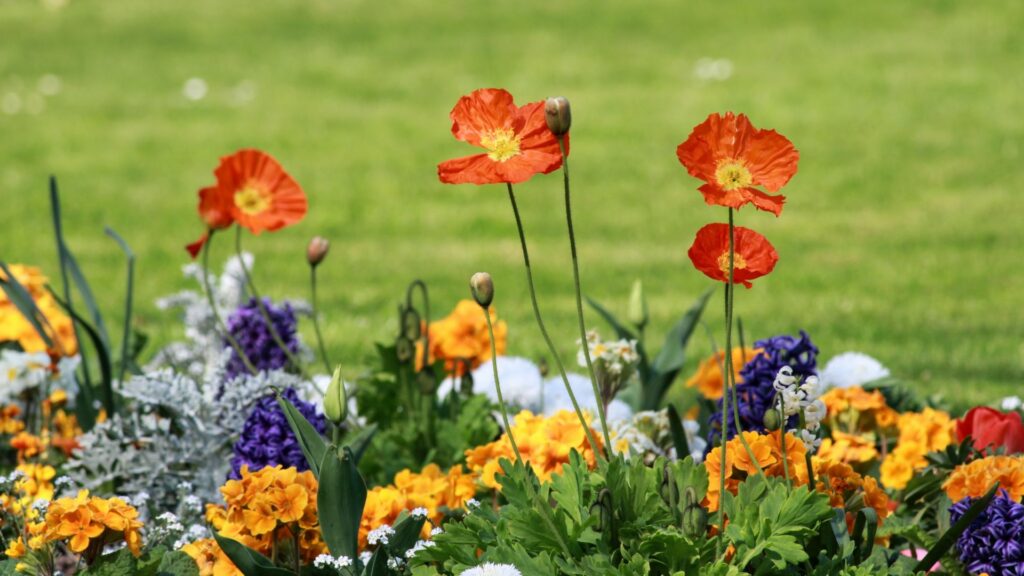
Think of a garden that feels fresher and cleaner. Unlike bare mulch, which can dry out and stir up dust during windy days, living ground covers help trap airborne particles and allergens.
Their dense foliage holds soil in place and prevents dust from becoming airborne, making your garden a more comfortable space to breathe and relax in.
Plants like dichondra or corsican mint not only suppress allergens but also add softness underfoot. It’s a subtle but impactful way to create a healthier, more enjoyable outdoor environment—especially if you or your family suffer from seasonal allergies.
22. Tolerates Foot Traffic In Key Areas
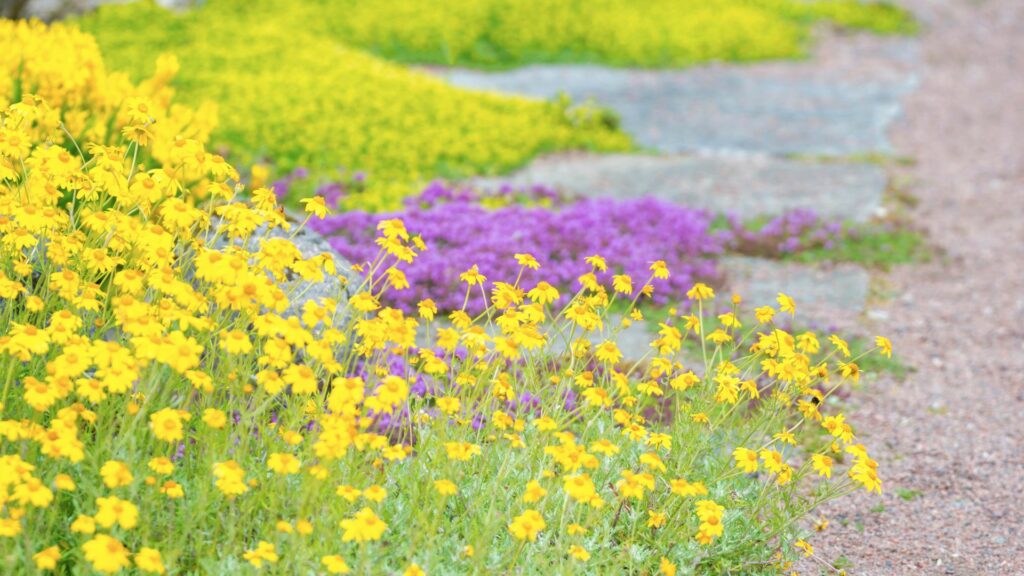
Picture a garden path that’s both functional and beautiful. Certain ground covers can tolerate light foot traffic, making them perfect for areas where mulch would scatter or decompose quickly.
These plants fill in gaps between stepping stones or along walkways without sacrificing structure or appearance.
Varieties like creeping thyme or blue star creeper recover quickly from occasional trampling and even release pleasant scents when stepped on. They transform high-use areas into inviting, resilient spaces that remain tidy and cohesive.

